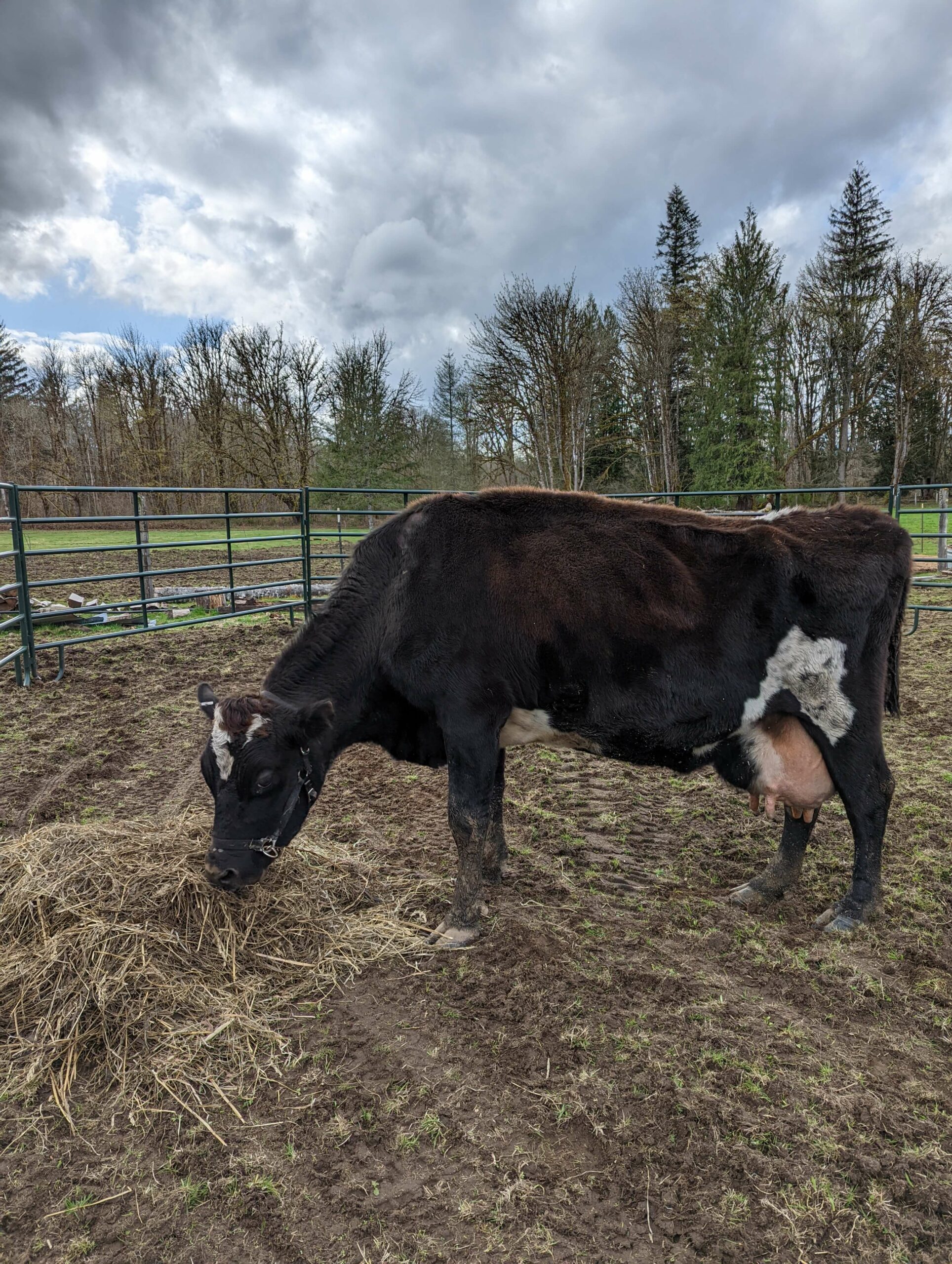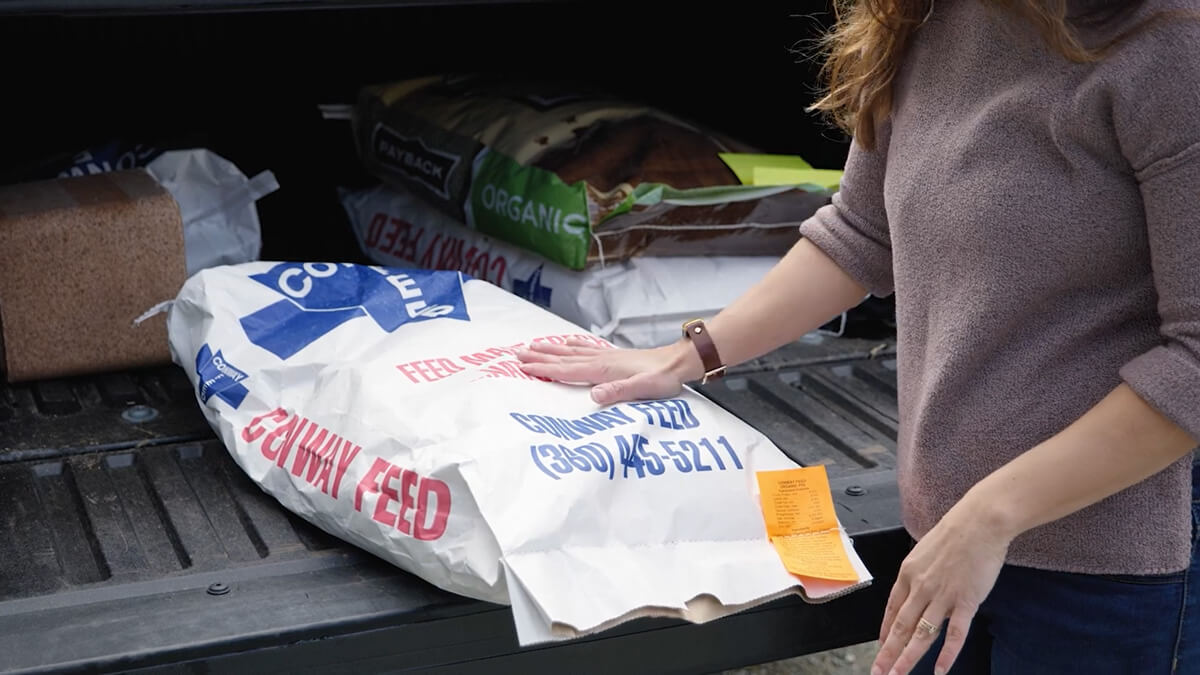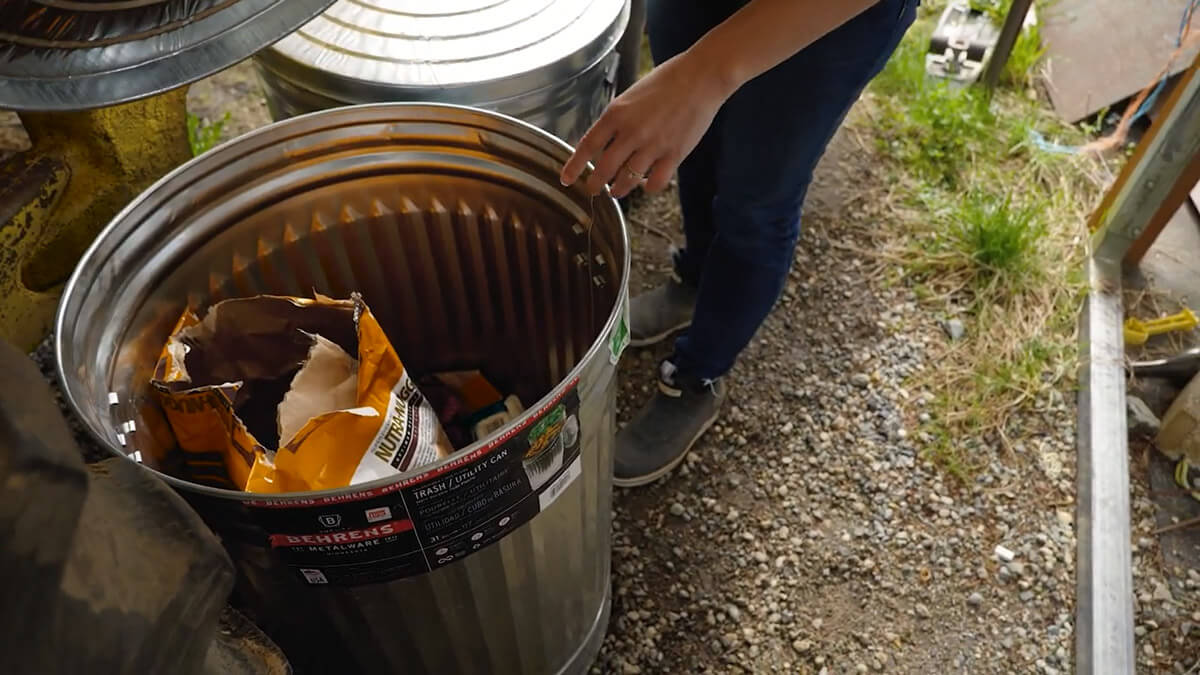If you have livestock or pets, now is the time to be stocking up on extra animal feed if at all possible. Unfortunately, feed costs are expected to go up exponentially this summer, so having additional feed on hand will only save you money later on.

I have a friend who is a farmer, and another friend whose local granary is expecting prices to go up to $200 per ton, minimum!
I certainly hope this is incorrect, but we all know that prices will increase, so if you can afford to buy feed in advance, you’ll always save on whatever the prices are in the future, even if it doesn’t skyrocket like the predictions mentioned.
Different Feed Options
One thing not many people realize is that you can use other animal feeds for different animals.
For example, we have a dairy cow that mostly eats grass, but we will supplement some grain for good milk production. Most of the non-organic dairy mixes offered at my local granary (they don’t offer an organic mix) have byproducts of canola oil. I’m not thrilled with my animals (or my family) consuming this.
However, the organic pig feed from my local granary has the same percentage of macros (fat, protein, carbohydrates) as the dairy feed so I can purchase the pig feed for my dairy cow.
It’s important to know the requirements of your animal’s base macros, as well as their salt, iodine, and other mineral requirements. (Find out what to feed pigs and what NOT to feed pigs in how to raise, butcher & cure pigs for best flavor.)
There are certain kinds of feed that work for numerous animals, especially when considering oats, cobb, and barley. No matter what the livestock you’re feeding, you need to know the fat, protein, and carbohydrate requirements for each animal and you can formulate your own feed by purchasing the individual ingredients and mixing them on your own (this usually adds up to additional savings as well).
I’m also planting some different varieties of squash in the garden this year which I can use as supplemental feed for my animals if needed, but yet my family can also eat them as well.
Don’t forget supplements and minerals for your animals! We love purchasing our salt blocks from Redmond Agriculture
How Much Feed Per Animal
Ruminant Animals (Cattle, Bison, Goats, and Sheep)

How much to feed per animal will depend upon the weight of the animal (obviously older larger animals eat more per day). The amount you need to purchase will vary based upon your available pasture, grass, or forage growing on your land for the time of year.
Ruminant animals (ruminant means there are multiple chambers to their stomach and require a large amount of roughage and fiber). Ruminant animals include bison, cattle, goats, and sheep.
The general rule of thumb is a ruminant requires 2.5% of their body weight in dry feed forage a day.
A 1,000-pound cow will consume about 25 pounds of dry weight forage a day. Remember that grass hay has some moisture content, to meet the dry weight, you’ll need to calculate the moisture content and add that for the additional pound for your final feeding number.
Example, a 1,000 pound cow x 2.5% (0.025) = 25 pounds of dry weight forage.
Grass hay is approximately 8% moisture content so 25 lbs x 8% (0.08) = 2 pounds.
Add 2 to 25 pounds and you’ll need to feed 27 pounds a day. Estimate some of the hay will be wasted and round up to about 30 pounds per day.
We predominantly feed haylage and its moisture content averages at 40%, so our daily amount based upon a 1,000 pound cow is 25 lbs x 40% (0.40) = 10 pounds.
Add 25 pounds plus 10 pounds and we should feed 35 pounds a day with an additional few pounds for waste.
How Much Feed Per Pig Per Day

When raising pigs for meat, how much to feed a pig per day depends upon their weight. A rough estimate is 4% of their body weight a day.
A 100-pound pig would require 4 lbs of feed per day. You want to ensure they’re also getting proper protein amounts (which vary by their age).
Animals eat more in cold weather to maintain body heat so calculate extra if you’re keeping them through the winter months.
How Much to Feed Chickens Per Day

This depends on if you’re raising meat birds or hens for eggs. Each has different feed requirements based on their age (noticing a theme here).
According to the University of Kentucky Agriculture Extension Office, a flock of 25 meat birds weighing 5 pounds at butcher time will go through five fifty-pound bags of feed.
If your hens don’t have access to free-range, a good rule of thumb is to feed them 1/4-1/3 lb of feed per chicken per day. If they are free-ranging (or in a portable chicken tractor), you can scale this amount back.
Bulk Size Ordering for Animal Feed

Depending on the feed store you’re purchasing from, there are sometimes larger options to buy feed than what’s on display. You can often order by the ton, but what I like to do is order in “super sacks” which is either 500 or 600 pounds of feed.
Check ahead of time because these usually require ordering ahead. However the larger the quantity you purchase, the cheaper your overall feed cost will be.
Look for Sales
Sometimes stores will have annual sales where they offer discounts on feed. Some friends of mine wait until their local feed store’s anniversary sale and buy an entire year’s worth of dog food because they can buy one bag of food and get the second bag 50% off. When buying a year’s worth of dog food this ends up being huge cost savings.
Animal Haylage

We buy something called animal haylage which is actually fermented hay. We buy our haylage wrapped which keeps it dry and protected even stored outdoors in the elements.
The great thing about the fermented haylage is that it has a nice protein count, is good for ruminant animals, and meets the nutritional needs of both beef cattle as well as dairy cattle (which we raise both on our homestead).
The thing you need to know about hay is with the skyrocketing fuel prices and seed prices, there are a lot of farmers who are not going to be able to sow their fields with their normal hay crops this year due to pricing.
If you don’t have a standing agreement with a farmer or a feed store where you order a certain amount every year, then I recommend getting something like that set up right now.
Local relationships are key during these times when supply and demand are going to be skewed. There will likely be hay shortages this year. I don’t say this to evoke panic, but to encourage you to prepare ahead of time as much as possible.
Storing Animal Feed

If you’re going to be ordering large quantities of feed, it’s imperative that you have the storage space thought out ahead of time. You’ll need to store your feed in an area where it will stay dry and free from pests or rodents that might chew through the bags.
This is especially important if you’re going to be storing your feed for months, or up to a year at a time, which is a great way to get your homestead ready for winter.
If moisture gets in it could cause mold which will spoil the food. So even areas that have high humidity should be avoided.
One caveat is our chicken feed for our meat chickens. We calculated exactly how much feed they’ll need from chick to butcher date and have that feed set up on pallets with a covering to keep it dry. Because it’s only eight weeks we’re not concerned about a long-term storage option.

Some of the ways we store various feeds are in large food-grade 55-gallon drums or large metal garbage cans with lids. We have a large shipping container that is good for keeping rodents out and a long-term storage option. And we have the pallet and cover option mentioned above because we don’t have a proper barn.
Other Posts You May Enjoy
- Buying Grain in Bulk
- Raising Your Own Grass-Fed Beef
- Scottish Highland Cows: A Unique Cattle Breed
- Behind-The-Scenes of a Cow Herd
- Raising Meat Chickens for Profit
- A Guide to Raising Goats
- Raising Sheep for Fiber & Naturally Dyeing Wool
- Everything You Need to Know About Raising Rabbits for Meat
- How to Keep Animals Cool in Hot Weather










Cow feed with Rumensin can kill horses. Copper is regulated in sheep feed because too much copper can kill sheep. It is NOT regulated in other animal feeds such as goat, cow, horse etc. feed – you won’t know how much copper is in this feed if it is fed to sheep and could be toxic.
Seems like it would be a whole lot easier to switch to a plant-based diet so there’s no need to keep livestock. A lot better for the environment, too. Just saying . . .
Our immediate environment and health have improved tenfold since we began wrangling our own livestock.
It’s going to be another unpredictable crazy summer! We cut our own hay and sell enough excess to have enough for winter to break even in equipment costs, I also started fermenting my chicken scratch
Another option or supplemental feed would be sprouting seeds. You can turn any amount of seed into 5 times the weight of feed. The nutrients are more bioavailable to the animal then just seeds themselves. If you can do it for even a few of your animals. It would be healthier them and save you money. Just look up what sprouts are good for which animals. Then give it a try.
I would love to stop buying organic chicken feed from the local farm store and look at a bulk option, do you have a resource for how to get started?
We store feed in several old freezers (not plugged in) on our farm. And we bought enough feed to fill all the freezers. Old freezers can often be found for the asking. Our chicken feed went up 40% from October to January and we expect it to go up more when the community gets their chicks in a few weeks.
Another thing we are doing is supplementing the feed with garden produce and weeds — carrot tops, chickweed, plantain leaves, etc.